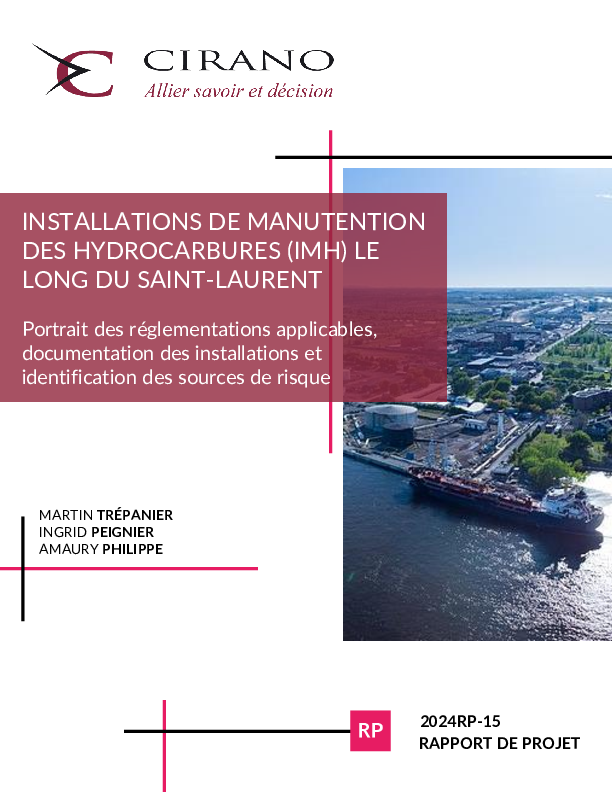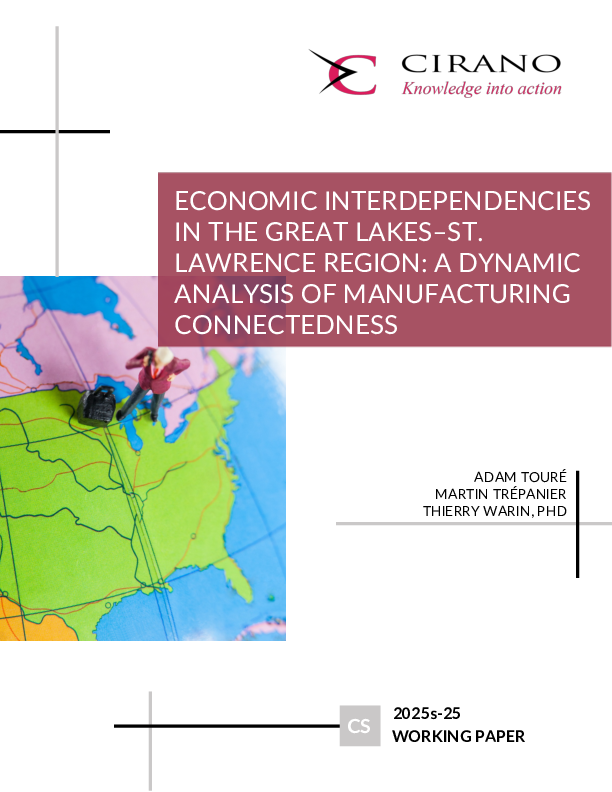Installations de manutention des hydrocarbures (IMH) le long du Saint-Laurent : portrait des réglementations applicables, documentation des installations et identification des sources de risque
Maritime transport is crucial to Quebec's economy, particularly through the St. Lawrence Seaway corridor, one of the world's longest inland waterways. However, the risks associated with the maritime shipping of hazardous materials, such as oil and gas, are significant. With an expected increase in maritime traffic and hazardous materials being transported, rigorous risk management is essential. Furthermore, statistics show that the majority of spills caused by ships occur during the loading and unloading of oil from vessels at oil handling facilities (OHF). In this context, the CEGRIM, made up of representatives from six Quebec ministries, mandated CIRANO to carry out a study to better understand the risks associated with Quebec's OHFs using the marine mode. Using three data sources (Régie du Bâtiment du Québec data on tanks associated with OHF, AIS data on vessel movements, and data from a proprietary CIRANO survey of OHF in Quebec), this study provides in-depth knowledge of OHF, including current regulations, activities and risk management measures put in place. It also provides risk source indices and OHF mapping, enabling better risk management in the Quebec maritime sector.
CONFIDENTIAL REPORT




